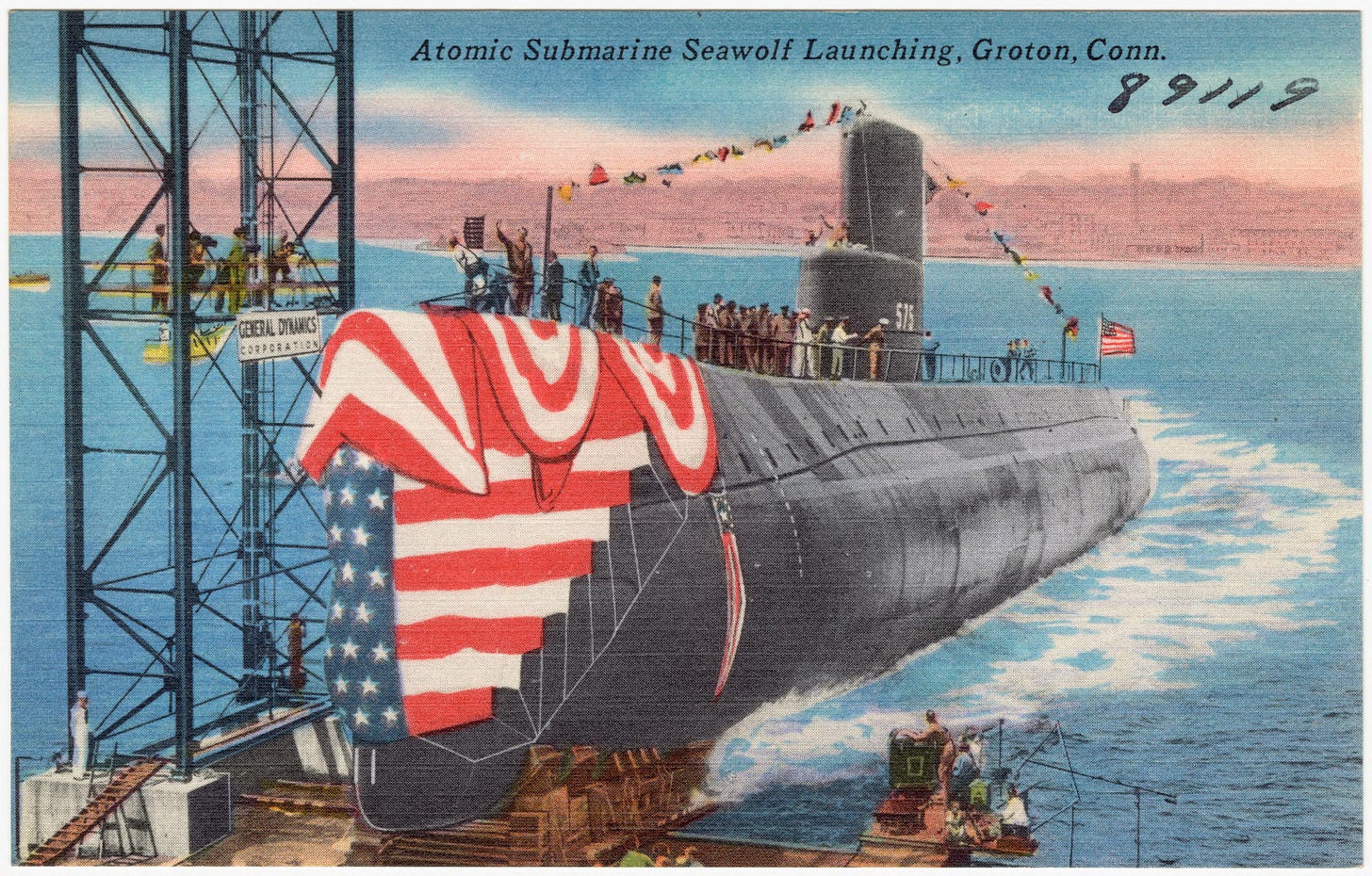Tell us a Sea Story
What happens when readers write back
Welcome back to the Two Navy Guys Debrief, the (mostly) weekly forum where we offer perspective on a national security issue and how we have explored that topic in our fiction.
On this US holiday weekend, we veer from the beaten path. We’re not going to discuss terrifying new weapons platforms or the battlefield strategies unfolding in Ukraine. We’re not even going to talk about writing.
Let’s talk about you for a change. Yes, YOU, the person reading this article (or one of our books).
Being a writer is not a lonely experience
It turns out, one of the unexpected joys of being a writer is getting to meet new people. The vast majority of you read our books or our Substack articles and carry on with your lives. That’s just fine with us. In fact, it’s what we expected when we started this gig.
But every once in a while, some words we’ve written compel a reader to reach out. They might share a memory, suggest a topic for us to explore, send us a story idea, or just say hello.
Last week, Richard from Texas dropped us an email with a link to a submarine article that will most definitely turn into a future Sunday post. A few hours later, our friend Walter from Canada, who proofread Proxy War for us and gave it a thumbs-up, shared the name of a mil-thriller writer we’d never read before.
We could go on. Helen from Australia wrote to say hello, Claude from Minneapolis sends us story ideas on the regular, and who could forget David Taylor’s moving review of Counter Strike?
And then, there’s the sea stories.
Been there, done that
We showed this picture a few weeks ago and a Special Forces veteran from that era dropped us a line to let us know they used to call that maneuver “Flying the Trashcan.” (He also advised us that was not a duty that you wanted to be “voluntold” for.)
But perhaps our best sea story happened after we published this review of Command and Control from a reader who identified himself as IC2(SS):
Well-written, war fighting book...I got about half way thru the book, when the authors mentioned Operation Ivy Bells. It became an integral part of the story...I may, or may not, have participated in three Operation Ivy Bells missions in the late 1970s, onboard the USS Seawolf. Good times. [emphasis added].
For anyone who doesn’t speak fluent Navy, an IC2(SS) is a Navy rating (job) designation for an interior communications electrician with the rank of a petty officer second class, an E-5. The SS stands for submarine qualified, which means the individual has completed an extensive course of study to learn all of the submarine systems, a process which normally takes about a year. Submarine qualified sailors are authorized to wear “dolphins” on their uniform, silver dolphins for enlisted sailors, gold for officers.
Historical sidebar on Operation Ivy Bells
Ivy Bells is a fascinating true story about a CIA operation during the Cold War.
The Soviet Union installed a communications cable under the Sea of Okhotsk between the submarine base on the Kamchatka Peninsula on the Pacific Ocean and the Russian mainland. Encrypted Soviet communications were often backlogged, so this special line was a workaround to give the Kremlin fast access to one of their most important military assets of the Cold War.
The Soviets were so confident in their security that the comms on this channel were--wait for it--unencrypted.
Why bother with encryption? The line was hundreds of feet underwater in an inland sea heavily trafficked by Soviet naval assets. Really, what could go wrong?
A lot. In the early 1970s, the CIA used US Navy submarines and divers to tap this Soviet communications cable located in 400 feet of water. An NSA-designed device, placed around the cable, recorded the communications. Since it was a recording, that means a submarine had to return periodically to retrieve and replace the recording unit.
This went on for almost a decade. In fact, the Soviets only found out about Ivy Bells when an NSA employee turned traitor in 1980. He sold out his country for $35,000.
In Command and Control, we revived this Cold War operation when we gave Lieutenant Janet Everett the mission to tap a modern Russian underwater cable in the Sea of Okhotsk.
A few weeks after the review appeared in our weekly article, IC2(SS) reached out to say hello and swap some sea stories. We still keep in touch. In fact, he was the one who turned us on to the music of the late Tommy Cox, a submariner-turned-musician who specialized in the fine sub-genre of Submarine Folk music. Take a listen:
On this first day of September, as we say goodbye to summer, we’d like to say thank you to all our readers. To bastardize a quote attributed to Emerson: the point of a journey is the destination, it’s the people you meet along the way.
The wonderful readers we’ve met from all over the world since we started publishing ten years ago has been an unexpected gift to us.
Here’s to another ten years!
Be happy. Stay healthy. Read (or listen to) a book.
As always, thanks for being a supporter –
David & JR, AKA the Two Navy Guys
PS – Are you looking for the FREE download of Death of a Pawn?
PPS - This email is free, but it's not cheap. If you'd like to show your support, here's where you can find all the Two Navy Guys' books.
PPPS - If you enjoyed this post, you can get it delivered to your inbox every week for free.






